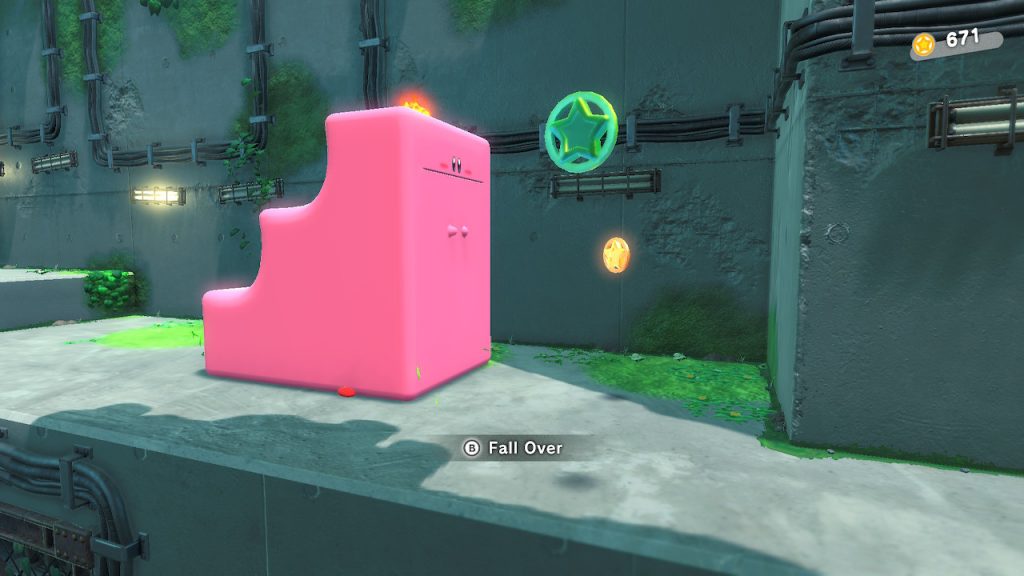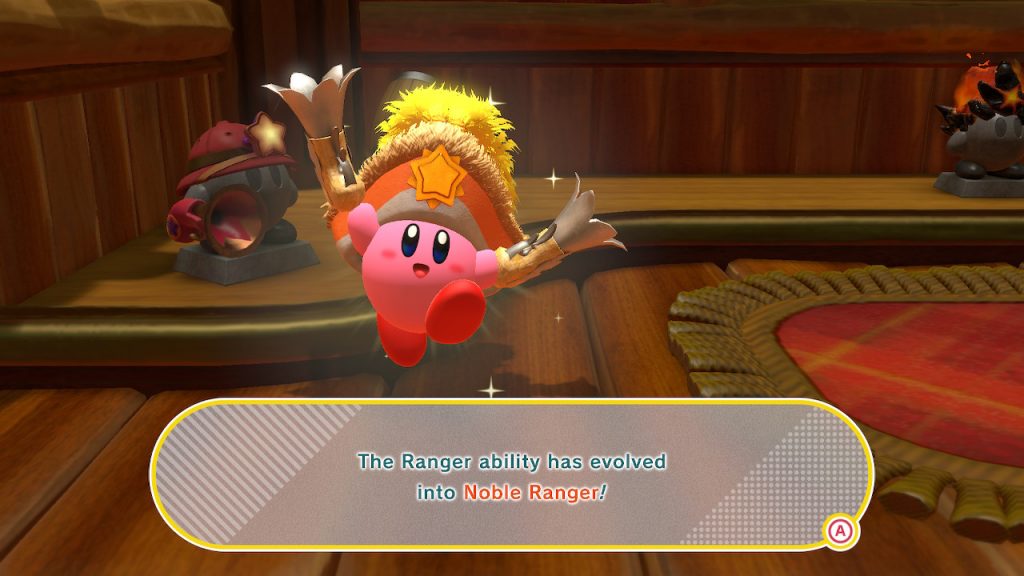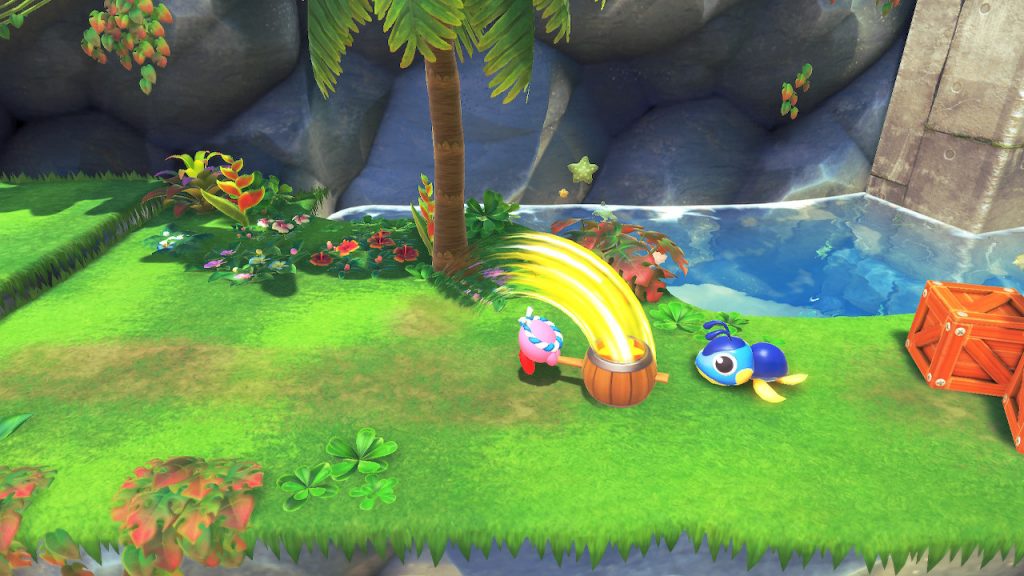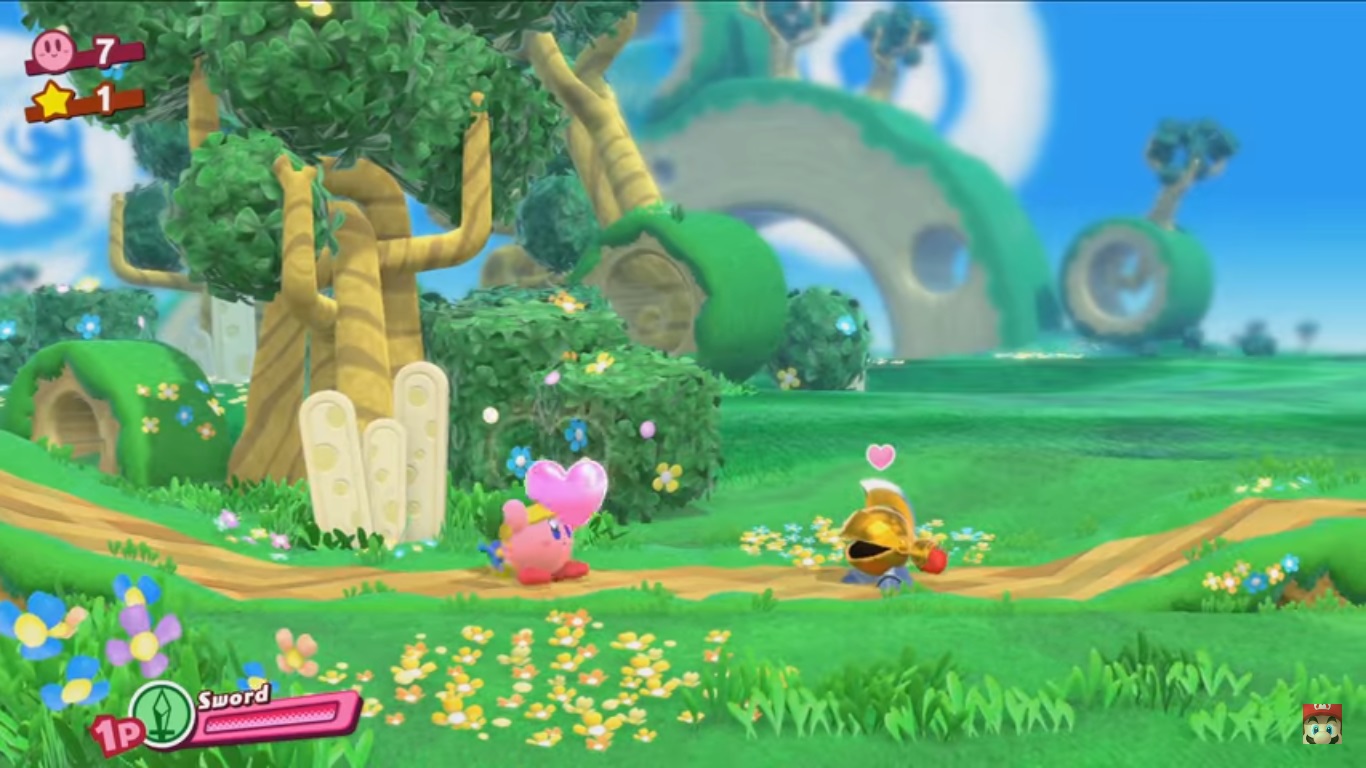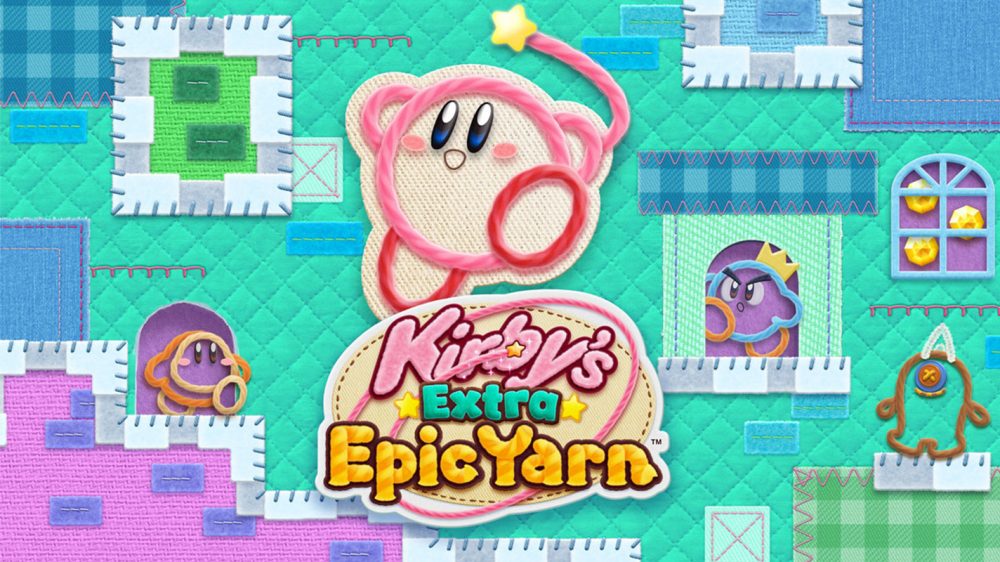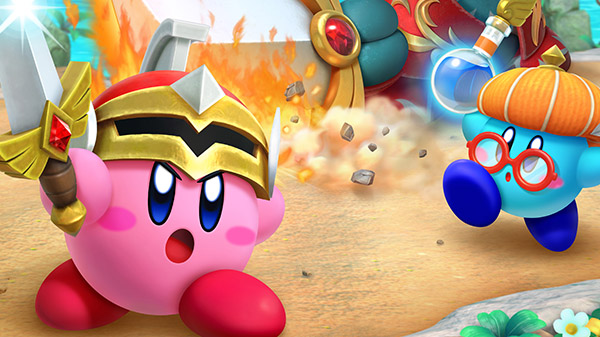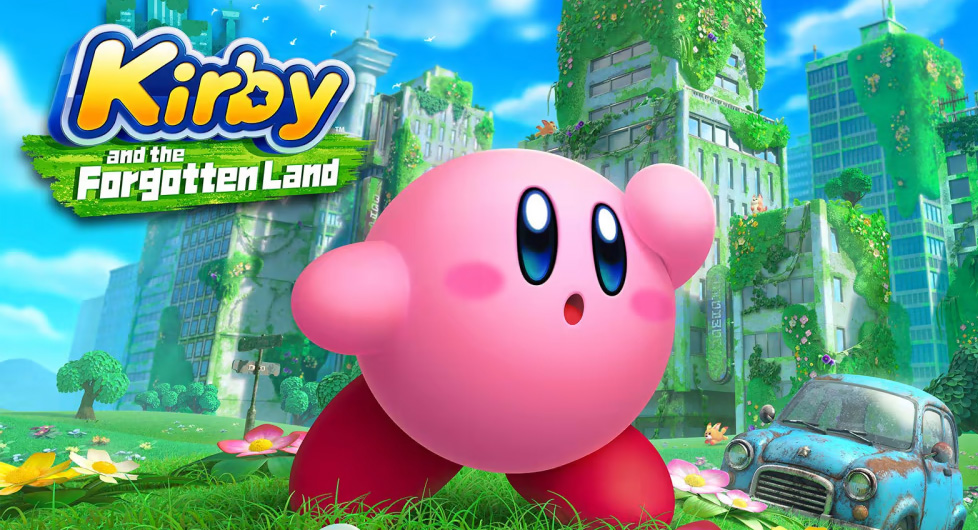
While Kirby has been one of Nintendo’s star franchises for the past thirty years, beginning from humble roots on the original Game Boy with Kirby’s Dream Land, the adorable pink puffball’s adventures have always taken place on a decidedly two-dimensional plane, even when trussed up with 3D visuals in more recent games. Kirby and the Forgotten Land finally translates Kirby’s kid-friendly and hugely endearing style of platforming gameplay to 3D, with a title that so effortlessly works in the third dimension that it’s a wonder the series hasn’t remained here longer.
Kirby and the Forgotten Land‘s closest comparisons might be to Super Mario‘s experiments in the past decade. Environments are open-ish, but linear, filled with mild platforming challenges and enemies in a style reminiscent of Super Mario 3D World. Kirby’s abilities, translated almost directly from his past games, feel right at home here. Kirby himself moves at a decent clip, able to suck up his enemies and spit them back out as ammunition as has been able to do since Kirby’s Dream Land. Gobbling up certain enemies will still grant Kirby their ‘copy’ ability, giving Kirby both an adorably relevant hat and their power, like a sword, hammer, rifle, fire breath, etc. These abilities have all been given depth not only with several ways that Kirby can implement them, such as powering them up for stronger attacks or using them as a boost for movement, but they can all also be upgraded into more powerful forms, which becomes an ongoing project you can choose to engage in.
The other major influence from the Mario series seems to come from Super Mario Odyssey, which similarly asked the question – when does Mario stop being Mario? In that game, Mario was able to throw his hat onto enemies and objects to ‘possess’ them, allowing Mario to take the form of nearly anything. Kirby doesn’t have quite that freedom, but instead a new range of opportunities to use ‘Mouthful’ powers, where Kirby can suck up objects that drastically alter his size and shape, allowing him to both solve puzzles and offering new types of gameplay. These forms are slightly disturbing, but somehow manage to still be staggeringly cute, as Kirby’s misshapen globular body envelops staircases that he can move around to solve climbing challenges or giant lightbulbs to aid in dark environments. The best of these Mouthful powers succeed in providing a great deal of variety in levels, like Kirby’s car form providing simple racing stages, or his vending machine mode offering some simple shooting mechanics.
The strange world Kirby visits in The Forgotten Land is as colourful and vibrant as Planet Popstar, but with a distinct influence from post-apocalyptic fiction and visual design, such as The Last of Us. The titular forgotten land contains the empty ruins of a civilisation essentially identical to our modern day one, now abandoned, overgrown with flora and fauna, flooded and frozen. Despite the grim conclusions you can draw from the scenery, Kirby remains cheerful in its presentation, and somehow presents us with one of the cutest and warmest visions of the apocalypse we’ve seen yet.
All of this comes together in a platformer that feels familiar, but fresh. While the flow of completely new copy abilities begins to slow in the second half of the game, you’re always finding new ways to use them, and are in fact able to bring any in with you to stages whenever you want to. Combined with Kirby’s natural abilities (including a generous float) and gentle difficulty curve (even on the initial harder ‘Wild’ mode), Kirby and the Forgotten Land provides a relatively easy experience that’s very welcoming for kids, that nonetheless remains engaging. Completing levels earns you freed ‘Waddle-Dees’, who will assist Kirby in unlocking each area’s boss, but completing additional objectives will grant extra Waddle-Dees, as well as any you happen to find as you explore the levels. It’s never very tough to get a gang together to push through to the next area, but some objectives are specific enough that even completionists may miss them on their first go-around on a level. Luckily subsequent playthroughs of levels, often utilising different abilities, provide new ways to explore and beat each level’s challenges.
Outside of the main story, there are ‘Treasure Road’ challenges which will test your familiarity and expertise with each of Kirby’s copy abilities and Mouthful powers, to earn stars to upgrade said powers. These are all well-designed, slightly more difficult stages that are entirely optional, with some even remaining hidden unless you specifically go exploring for them. There’s also a Waddle-Dee Town which comes to life as Kirby progresses in the main campaign, with stores offering mini-games like a basic (yet entertaining) food truck game, or a more challenging boss rush arena which pits Kirby against venerable series’ anti-hero, Meta Knight. Capsules containing models of characters, enemies and situations from the game, are also strewn around levels, as well as available for purchase in the town, so there’s plenty to collect if you’ve had a weakness for gashapon since Shenmue.
While largely a single player experience, there is the option for co-op that Kirby and the Forgotten Land takes great pains to remind you of consistently. However, the mode isn’t quite what you’d hope for, more akin to Tails in Sonic 2, as a second player takes control of a Waddle-Dee who follows Kirby around with a single spear ability, trying to keep up as the camera follows Kirby rather than the group. It’s nice that it’s an option, but I don’t think it would have mattered too much for an already easy game’s difficulty if the second player was allowed a more comparable role to Kirby’s, with the same copy abilities for instance.
Nevertheless, it’s actually quite pleasing to report that thirty years after I played the first Kirby’s Dream Land, Kirby and the Forgotten Land is proving that the Nintendo’s pink mascot has still got the goods. While never too challenging, Kirby’s unique array of abilities (including the grotesque but greatly amusing Mouthful mode) make for a consistently entertaining platformer that feels like a perfect translation of the series’ strongest qualities into the third dimension. Kirby and the Forgotten Land is an excellent family-friendly title for the Switch, yet another home run for Nintendo on the console, and hopefully a solid template for even more decades of Kirby to come.
-Delightful re-imagining of Kirby gameplay in 3D -Influences and references from across Kirby's long history to create something nonetheless new -Wide range of creative Kirby copy abilities and very amusing new powers -Gentle difficulty curve makes it ideal for kids, but still enjoyable for the whole family
-Somewhat perfunctory co-op mode

